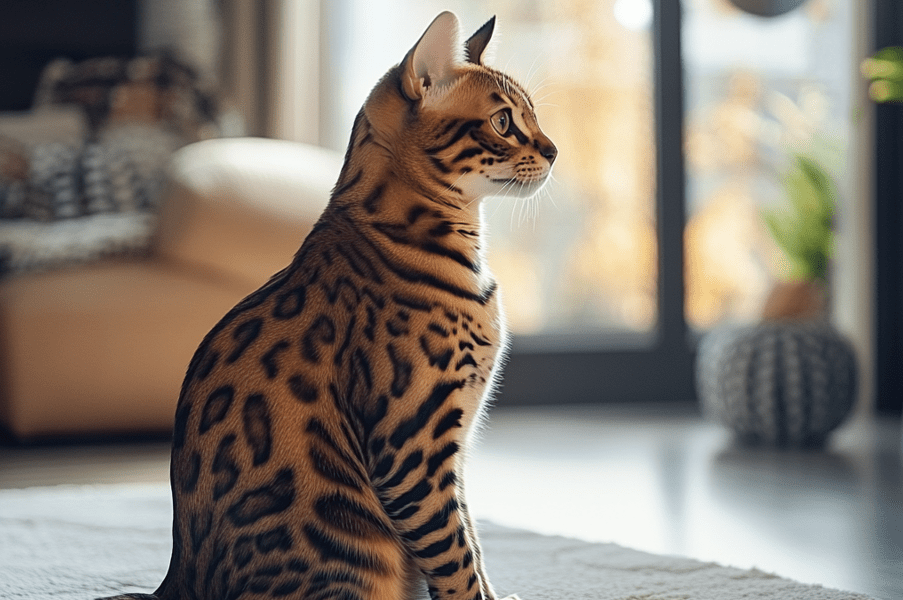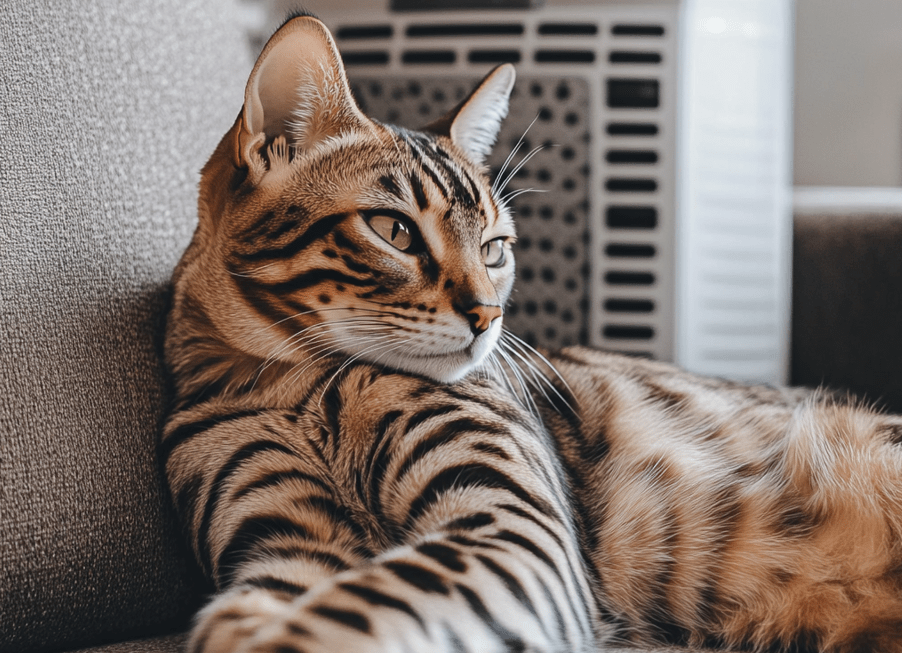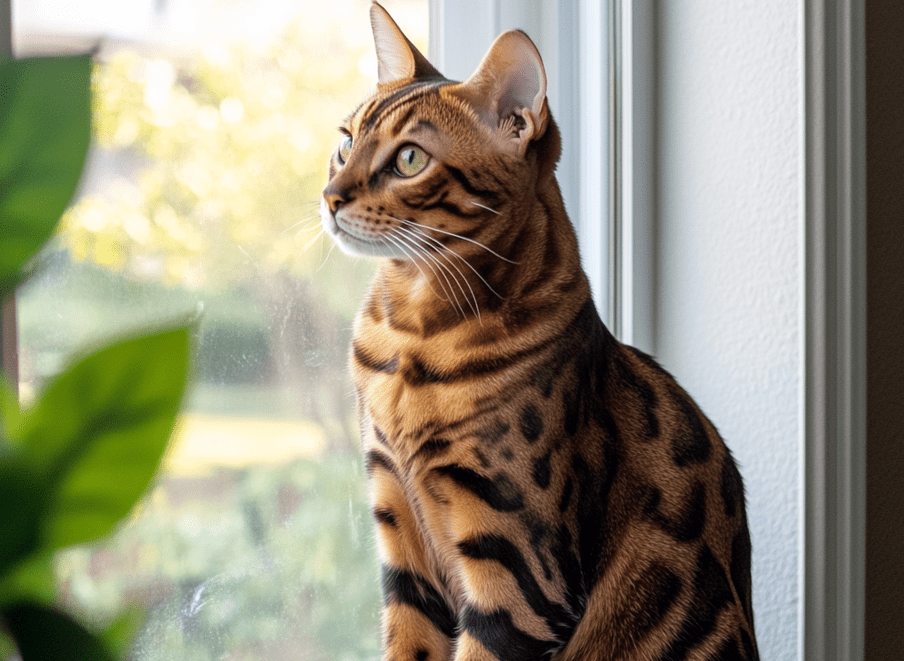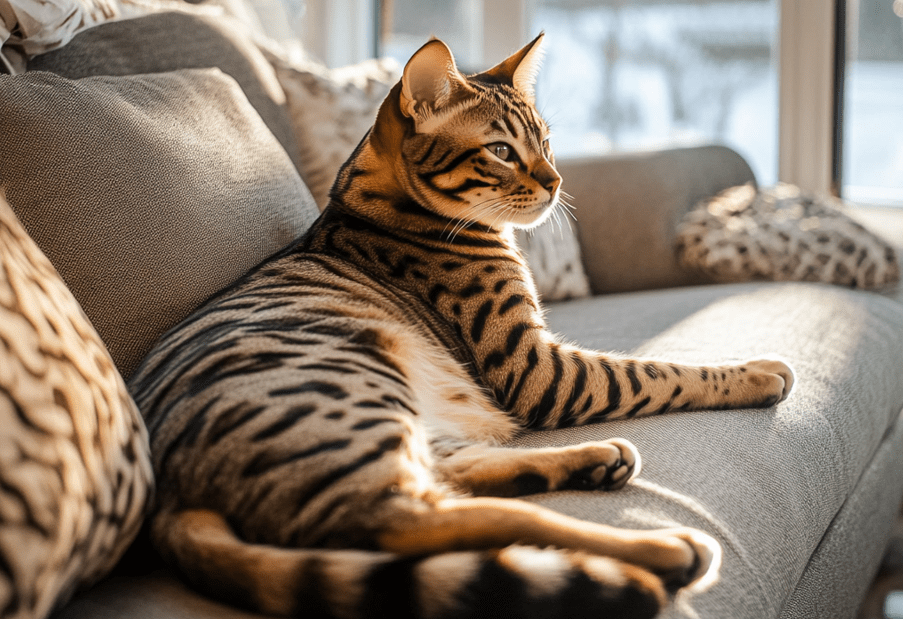
Bengal cats are known for their stunning leopard-like coats and energetic personalities, but their natural instincts can sometimes lead to unwanted behaviors—like scratching your furniture. If you’re struggling to stop your Bengal cat from scratching furniture, you’re not alone. This comprehensive guide will help you understand why Bengals scratch, offer practical solutions to redirect their behavior, and provide tips to protect your furniture while keeping your feline friend happy. Let’s dive into effective strategies to address this common issue and create a harmonious home for you and your Bengal.
Why Do Bengal Cats Scratch Furniture?
Scratching is a natural behavior for all cats, including Bengals, and serves several purposes. Understanding the reasons behind this behavior is the first step to addressing it effectively.
Instinctual Needs
Marking Territory: Bengals, like other cats, have scent glands in their paws. Scratching leaves both a visual mark and a scent, helping them claim their space.
Nail Maintenance: Scratching removes the outer layer of their claws, keeping them sharp and healthy.
Stretching and Exercise: Scratching allows Bengals to stretch their muscles, especially in their shoulders and back, which is essential for their active lifestyle.
Bengal-Specific Traits
Bengals are a hybrid breed, descended from the Asian leopard cat, which makes them more active and instinct-driven than many domestic cats. Their high energy levels and need for stimulation can lead to increased scratching, especially if they’re bored or understimulated. If your Bengal isn’t given enough outlets for their energy, they may turn to your furniture as a scratching post.
Environmental and Emotional Factors
Boredom or Lack of Stimulation: Bengals are intelligent and require mental and physical engagement. Without proper enrichment, they may scratch to relieve boredom.
Stress or Anxiety: Changes in the home, like new pets, visitors, or rearranged furniture, can cause stress, leading to increased scratching as a coping mechanism.
Lack of Alternatives: If your Bengal doesn’t have access to appropriate scratching surfaces, they’ll likely target your furniture.
Step-by-Step Guide to Stop Your Bengal Cat from Scratching Furniture

To stop your Bengal cat from scratching furniture, you’ll need a combination of redirection, training, and environmental adjustments. Here’s a detailed plan to help you achieve a scratch-free home.
1. Provide Appropriate Scratching Alternatives
Bengals need sturdy, appealing scratching surfaces to satisfy their instincts. Offering the right alternatives can redirect their scratching behavior away from your furniture.
Choose the Right Scratching Post
Height and Stability: Bengals are athletic and love to stretch fully while scratching. Choose a tall scratching post (at least 3 feet high) that won’t tip over during use.
Material Preference: Cats often prefer materials like sisal rope, carpet, or cardboard. Test different textures to see what your Bengal likes best—many Bengals favor sisal for its rough texture.
Location Matters: Place scratching posts in areas where your Bengal already scratches, like near your furniture, or in high-traffic areas where they spend a lot of time.
Offer Variety
Horizontal and Vertical Options: Some Bengals prefer vertical posts, while others like horizontal scratchers or pads. Provide both to cater to their preferences.
Cat Trees: A multi-level cat tree with scratching surfaces can satisfy their need to climb, scratch, and perch, all in one.
Encourage Use
Catnip or Toys: Sprinkle catnip on the scratching post or attach toys to make it more enticing.
Positive Reinforcement: Reward your Bengal with treats, praise, or playtime when they use the scratching post instead of your furniture.
2. Protect Your Furniture
While you work on redirecting your Bengal’s scratching behavior, take steps to protect your furniture from damage.
Use Physical Barriers
Furniture Covers: Use washable throws or slipcovers to protect your sofa or chairs. Bengals may be less likely to scratch a surface that doesn’t feel satisfying.
Double-Sided Tape: Cats dislike sticky textures. Apply double-sided tape or products like Sticky Paws to the areas your Bengal scratches. This deters them without causing harm.
Plastic or Vinyl Protectors: Clear plastic sheets or corner guards can be placed over furniture to prevent scratching damage.
Make Furniture Less Appealing
Aluminum Foil: Temporarily cover furniture with aluminum foil. The texture and sound can discourage scratching.
Scent Deterrents: Use pet-safe citrus or lavender sprays on your furniture. Cats often dislike these scents, but test a small area first to ensure it doesn’t damage the fabric.
3. Redirect and Train Your Bengal
Training your Bengal to scratch appropriate surfaces requires patience and consistency. Bengals are intelligent and can learn new behaviors with the right approach.
Redirect the Behavior
Interrupt and Redirect: When you catch your Bengal scratching furniture, gently interrupt them with a soft noise (like a clap) and guide them to their scratching post. Reward them when they use it.
Playtime Before Scratching: Bengals often scratch when they’re full of energy. Schedule play sessions to burn off energy before they turn to your furniture.
Use Positive Reinforcement
Rewards: Always reward your Bengal with treats, praise, or affection when they use their scratching post. Avoid punishment, as it can increase stress and worsen the behavior.
Consistency: Be consistent in redirecting and rewarding. Over time, your Bengal will associate the scratching post with positive experiences.
Clicker Training
Bengals respond well to clicker training. Use a clicker to mark the moment they scratch the post, followed by a treat. This reinforces the desired behavior effectively.
4. Enrich Your Bengal’s Environment
Bengals are high-energy cats that need ample stimulation to prevent destructive behaviors like scratching. A well-enriched environment can reduce their urge to scratch furniture.
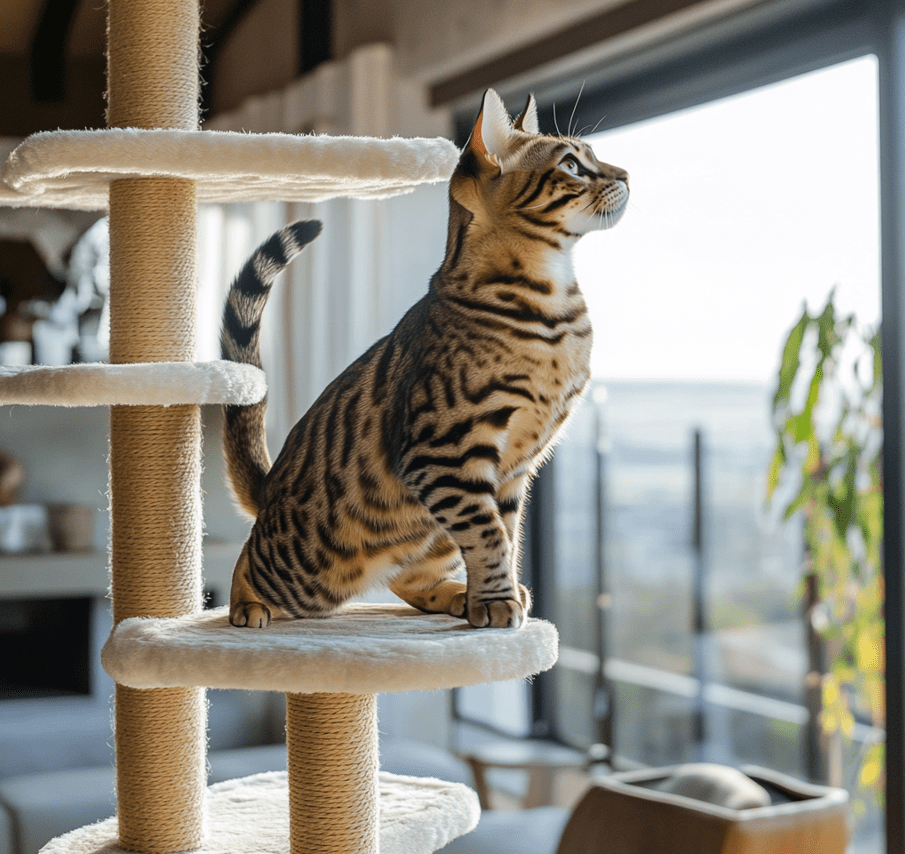
Increase Physical Activity
Interactive Play: Use toys like feather wands, laser pointers, or balls to engage your Bengal in active play for at least 20–30 minutes twice a day.
Climbing Opportunities: Provide cat trees, shelves, or window perches for climbing and exploration. Bengals love vertical spaces.
Mental Stimulation
Puzzle Toys: Offer food puzzles or treat-dispensing toys to keep your Bengal mentally engaged.
Rotate Toys: Introduce new toys or rotate existing ones to prevent boredom.
Training Sessions: Teach your Bengal tricks like “sit” or “fetch” to challenge their intelligence and strengthen your bond.
Create a Safe Space
Quiet Retreats: Ensure your Bengal has a cozy spot to retreat to if they feel stressed, like a cat bed or a covered hiding spot.
Window Views: Bengals love watching birds or squirrels. Set up a perch by a window to keep them entertained.
5. Address Underlying Stress or Health Issues
Sometimes, scratching can be a sign of stress, anxiety, or health problems. Addressing these underlying issues can help stop your Bengal cat from scratching furniture.
Reduce Stress
Stable Routine: Bengals thrive on consistency. Maintain regular feeding, play, and sleep schedules to reduce anxiety.
Minimize Changes: Introduce changes (like new furniture or guests) gradually. Use pheromone diffusers like Feliway to help your Bengal feel calm.
Check for Conflicts: If you have multiple pets, ensure there’s no tension causing your Bengal to scratch as a stress response.
Health Check
Vet Visit: Excessive scratching can sometimes indicate health issues like allergies, skin irritations, or overgrown claws. Schedule a vet visit to rule out medical causes.
Claw Maintenance: Trim your Bengal’s claws every 2–3 weeks to reduce damage to furniture. If you’re unsure how to do this, ask your vet for a demonstration.
6. Be Patient and Consistent
Changing your Bengal’s scratching behavior takes time. Bengals are smart but can be stubborn, so patience and consistency are key.
Avoid Punishment: Yelling or spraying water can stress your Bengal and damage your relationship. Focus on positive reinforcement instead.
Monitor Progress: Keep track of your Bengal’s scratching habits. If they’re using the scratching post more often, you’re on the right track.
Adjust as Needed: If one method doesn’t work, try another. Every Bengal is unique, and it may take some trial and error to find the best solution.
Common Mistakes to Avoid When Stopping Bengal Cat Scratching
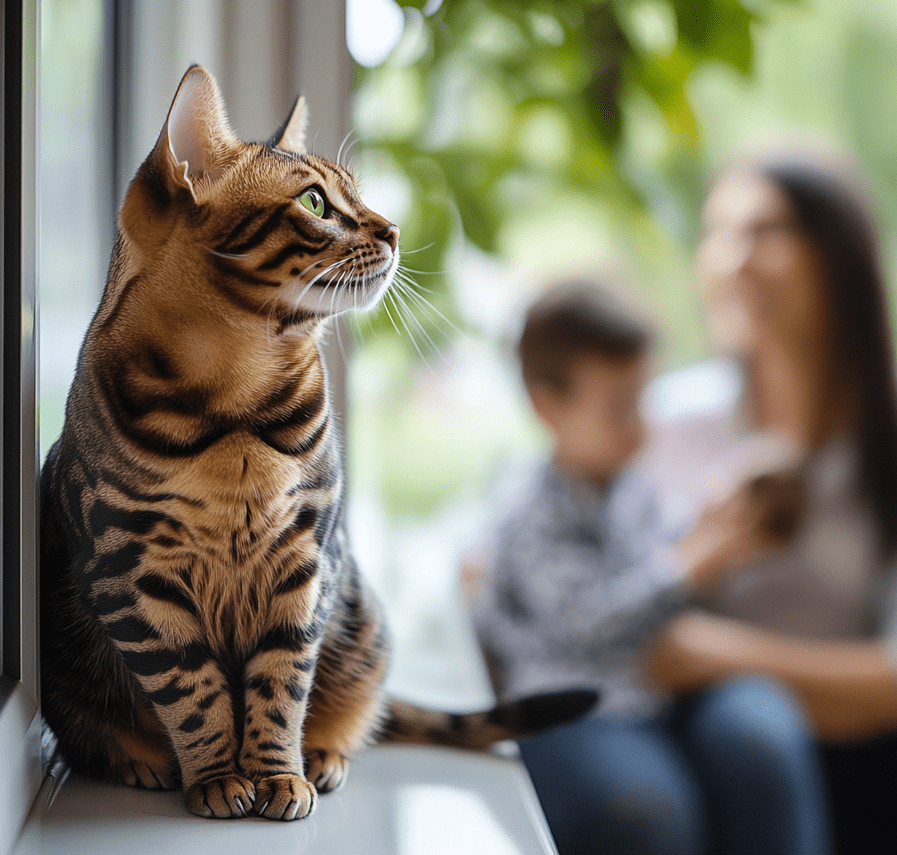
While working to stop your Bengal cat from scratching furniture, avoid these common pitfalls that can hinder progress:
Removing Claws (Declawing): Declawing is a painful and unnecessary procedure that can lead to long-term physical and behavioral issues. It’s banned in many regions and should never be considered.
Not Providing Enough Alternatives: A single scratching post may not be enough for a Bengal. Offer multiple options in different locations.
Inconsistent Training: If you only redirect your Bengal sometimes, they may get confused. Be consistent with redirection and rewards.
Ignoring Underlying Issues: If your Bengal’s scratching persists despite your efforts, there may be an underlying stress or health issue that needs addressing.
Additional Tips for Bengal Cat Owners
Here are some extra tips to help you manage your Bengal’s scratching behavior and maintain a scratch-free home:
Regular Claw Trimming
Trimming your Bengal’s claws regularly can minimize damage to furniture. Use cat-specific nail clippers and trim only the sharp tips, avoiding the quick (the pink part of the claw). If your Bengal resists, wrap them in a towel or do it gradually, rewarding them with treats.
Use Scratching Deterrents Wisely
If you use deterrents like double-sided tape or sprays, ensure they’re temporary. The goal is to redirect your Bengal to appropriate surfaces, not to make them afraid of certain areas.
Engage Their Hunting Instincts
Bengals have strong hunting instincts. Mimic prey with toys like feather wands or toy mice to satisfy their need to “hunt,” which can reduce destructive scratching.
Monitor for Changes
If your Bengal suddenly starts scratching more than usual, it could indicate stress, boredom, or a health issue. Observe their behavior and consult your vet if needed.
Conclusion
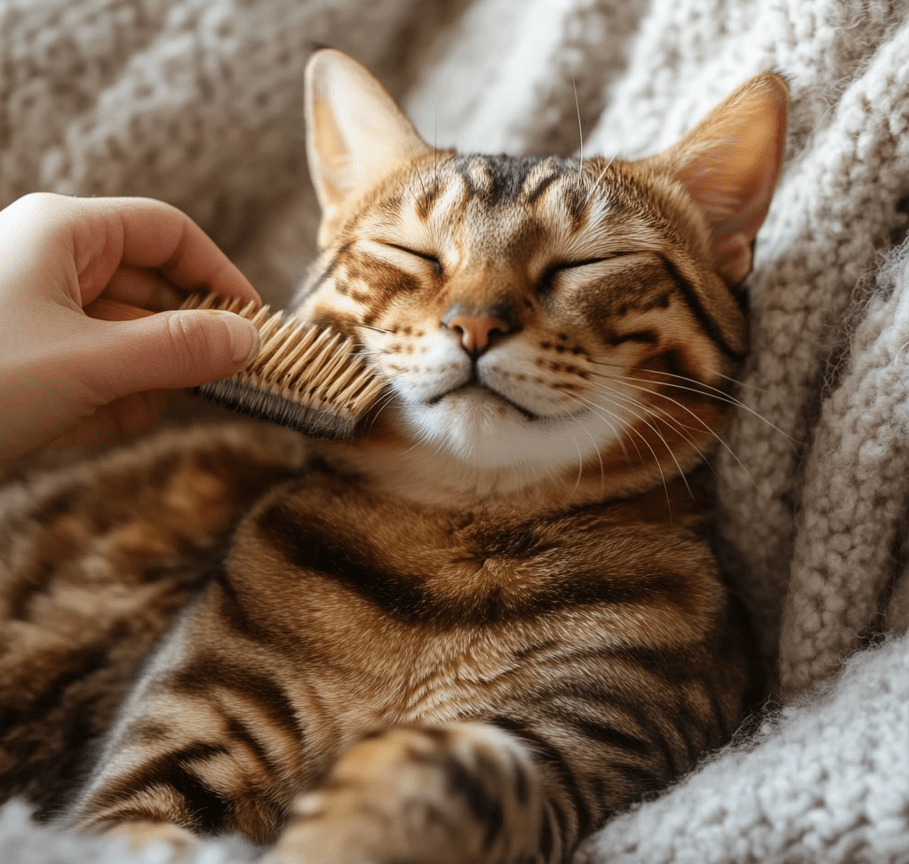
To stop your Bengal cat from scratching furniture, you’ll need a combination of redirection, environmental enrichment, and patience. By understanding why your Bengal scratches and providing appropriate alternatives, you can protect your furniture while keeping your cat happy and healthy. Offer tall, sturdy scratching posts, engage your Bengal with play and training, and address any underlying stress or health issues. With consistent effort, you can create a scratch-free home and a stronger bond with your Bengal.
For more Bengal cat care tips or to find feline behavior experts, check with your local vet or cat behaviorist. Your Bengal’s instincts don’t have to ruin your furniture—with the right approach, you can both live in harmony!

